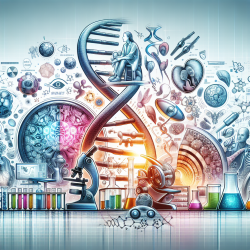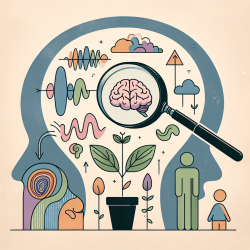Understanding DOHaD and Its Implications for IVF
The field of Developmental Origins of Health and Disease (DOHaD) provides critical insights into how early environmental exposures can impact long-term health. This perspective is particularly relevant in the context of Assisted Reproductive Technologies (ART), including In Vitro Fertilization (IVF). The article "From Embryos to Adults: A DOHaD Perspective on In Vitro Fertilization and Other Assisted Reproductive Technologies" explores these implications, emphasizing the need for careful consideration of the preimplantation environment.
Key Findings and Their Application
Research indicates that the conditions experienced by embryos during IVF can have lasting effects on health outcomes. This is due to the embryo's high sensitivity to environmental factors during critical developmental windows. The DOHaD hypothesis suggests that even minor deviations in the in vitro environment can lead to significant changes in gene expression and metabolic functions.
For practitioners, this underscores the importance of optimizing the conditions under which embryos are cultured. Factors such as oxygen levels, nutrient availability, and mechanical stress should be meticulously controlled to minimize potential adverse effects. Additionally, practitioners should remain informed about the latest research findings and technological advancements to continuously improve ART outcomes.
Encouraging Further Research
Given the potential long-term implications of ART, it is crucial for practitioners to engage in ongoing research and collaboration. Longitudinal studies tracking the health of individuals conceived via ART are essential to fully understand the impact of these technologies. Practitioners are encouraged to participate in such studies and contribute to the growing body of knowledge in this field.
Practical Steps for Practitioners
- Regularly attend conferences and webinars to stay updated on the latest research in DOHaD and ART.
- Network with other professionals to share insights and strategies for optimizing ART practices.
- Implement evidence-based practices in the laboratory to ensure the highest standards of embryo care.
- Advocate for policies that support long-term health monitoring of ART-conceived individuals.
Conclusion
The integration of DOHaD concepts into ART practices is not only beneficial but necessary for ensuring the health of future generations. As the field of ART continues to evolve, practitioners must remain vigilant and proactive in applying these insights to their work. By doing so, they can contribute to the development of safer and more effective reproductive technologies.
To read the original research paper, please follow this link: From Embryos to Adults: A DOHaD Perspective on In Vitro Fertilization and Other Assisted Reproductive Technologies.










